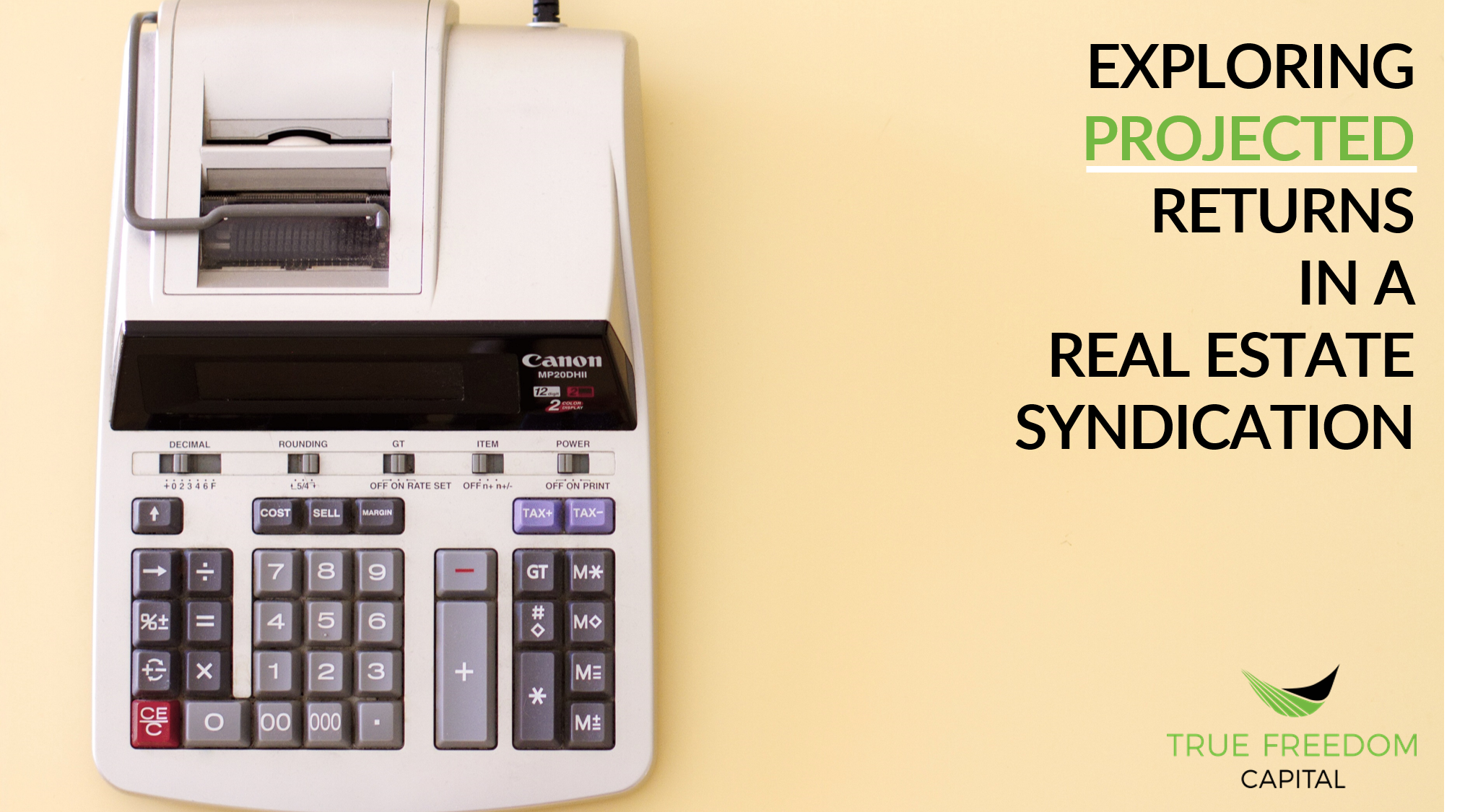
By Joe Firmin 3-Minute Read
One of the most common questions that we get asked is, “If I were to invest [insert dollar amount] with you today, what kinds of returns should I expect?”
We get it. You want to know how hard real estate syndications can make your money work for you, and how passive real estate investing stacks up to the returns you’re getting through other types of investment vehicles.
In order to help answer that question, you should first know that we will be talking about projected returns. That is, these returns are projections, based on our analyses and best guesses, but they aren’t guaranteed, and there’s always risk associated with any investment. The examples herein are only meant to provide some ballpark ideas to get you started.
In this article, we’ll explore the 3 main criteria you should look at when evaluating projected returns on a potential real estate syndication deal.
Three Main Criteria
Each real estate syndication investment summary contains a barrage of useful data. Focus on these core concepts:
(1) Projected hold time
(2) Projected cash-on-cash returns
(3) Projected profits at the sale
Projected Hold Time: ~5 Years
Projected hold time, perhaps the easiest concept, is the number of years we would hold the asset before selling it. What this means for you is that this is the amount of time that your capital would be invested in the deal.
A hold time of around five years is beneficial for a few reasons:
- Plenty can change in just five years. You could start and complete a college degree, move, get married, have 6 kids (amazing right) or... well you get the point. You need enough time to earn healthy returns, but not so much that your kids graduate before the sale.
- Considering market cycles, five years is a modest stint in which to invest, make improvements, allow appreciation, and exit before it’s time to remodel again.
- A five-year projected hold provides a buffer between the estimated sale and the typical seven- to ten-year commercial loan term. If the market softens at the 5-year mark, we can opt to hold the asset for a longer period of time, allowing the market to rebound and still exit prior to the loan term ending.
Projected Cash-on-Cash Returns: +8% Per Year
Next, consider cash-on-cash returns, otherwise known as cash flow or passive income. Cash-on-cash returns are what remain after vacancy costs, mortgage, and expenses. It’s the pot of money that gets distributed to investors.
If you invested $100,000, and earned eight percent per year, the projected cash flow would be about $8,000 per year or about $667 per month. That’s $40,000 over the five-year hold.
Just for kicks, notice the same value invested in a “high” interest savings account (earning ~1%) over five years would earn a measly $5,000.
That’s a difference of $35,000 over the span of 5 years!
Projected Profit Upon Sale: +50%
Perhaps the largest puzzle piece is the projected profit upon sale. Typically, we aim for about 50% in profit at the sale in year 5 (more is always better too).
In five years’ time, the units have been updated, tenants are strong, and rent accurately reflects market rates. Since commercial property values are based on the amount of income generated, these improvements, along with market appreciation, typically lead to a substantial increase in the overall value of the asset, thus leading to sizeable profits upon the sale.
Summing It All Up
Sounds simple enough, right? Typically, in the deals we analyze per our criteria, we are looking for the following:
- 5-year hold
- +8% annual cash-on-cash returns
- +50% profits upon sale
Sticking with the previous example, you’d invest $100,000, hold for 5 years, collect $8,000 per year in cash flow distributions paid out monthly (a total of $40,000 over 5 years), and earn $50,000 in profit at the sale.
This results in $190,000 at the end of 5 years – $100,000 of your initial investment, and $90,000 in total returns. Almost 2x your money in just 5 years? Um, yep! Don't mind if I do!
To reiterate, this is an example and we’re talking about projected returns. Each investment will be different and thus the returns.
If you’d like to discuss with me, I’d be happy to jump on a call with you. Schedule a call HERE.
If you’re ready to start exploring passive real estate investing, please join our investor network. Once you’re signed up, we can have an introductory call and hopefully move forward.
